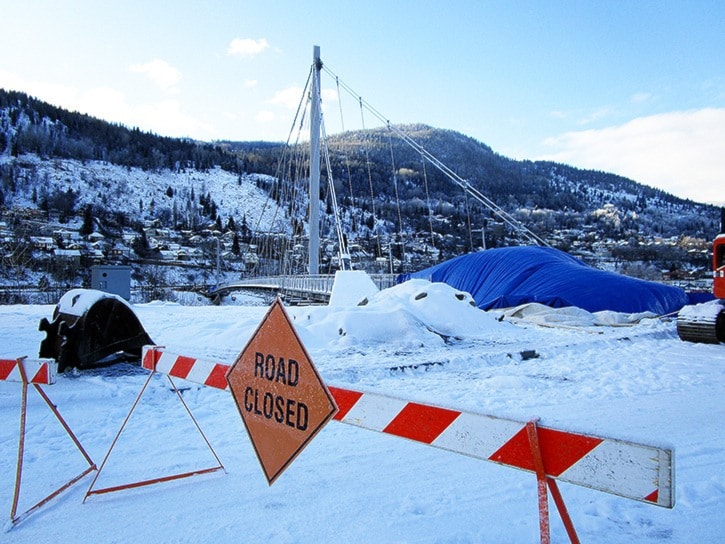Anticipation is in the air as many await their first walk across the Columbia River Skywalk on Thursday afternoon.
By all accounts, the build of Trail’s new landmark feature was quite seamless after ground broke in the fall of 2015. But the road in getting to this point?
That was indeed full of twists and turns.
The $15 .7 million project was controversial from the start. The first mention in the Trail Times was from reporter Valerie Rossi back in early 2011, when the regional sewer committee began seriously weighing options to replace the aging utility line slung across the river on the Old Trail Bridge.
Many studies later and countless discussions at the regional table brought Trail and service partners in Warfield and Rossland to where things stand today - the opening of a new walkway that disguises the sewer line below.
But like most political tales, there’s much more to the story than that.
Once regional partners half-heartedly agreed to an aerial sewer pipe three years later, the city moved ahead with what’s called an Alternative Approval process (AAP) in May 2014. Trail needed to borrow $5 million to build the pedestrian part of the project and sought loan authorization through an AAP (advertising intent in a local newspaper).
That’s when the project came to a screeching halt - AAPs can be stopped if 10 per cent of the electorate (573 Trail voters) opposed the move.
The second week of May, that is exactly what happened. A counter-petition was filed at city hall with 1,200 signatures (573 signatories confirmed Trail voters) who were against the new walking bridge for one reason or another.
Some hung to the ideal that a third driving bridge was in order. This wish will likely never be granted, the ministry views the Victoria Street Bridge as two bridges for a town of 7,500 - the two east and west bound lanes have the crossing designated a “superstructure”.
Aside from that, others questioned the plan to tear down the Old Trail Bridge, the need for a new sewer pipe in that location, and some avowed the pedestrian bridge was a waste of money, period.
Whatever the reason, the final outcome wasn’t even close after the matter was brought to referendum in August. The singular poll had 1,565 Trail voters marking their ballots affirmative compared to 411 who stuck with, “No.”
The final results showed almost 35 per cent of city’s voting populace cast a ballot during the referendum thereby assenting the City of Trail to borrow $5 million for the shore-to-shore Columbia River pathway.
“We are extremely pleased with the results of this referendum,” then-Trail mayor Dieter Bogs told the Trail Times. “It’s wonderful to have the support of our citizens for a project that is so important for the future of our city.”
Bogs said Trail council worked several years to make progress and was pleased that residents and property owners shared in the city’s long-term vision of growth and revitalization.
“This is a one-time opportunity to work in partnership with the RDKB,” Bogs stated. “On a project that will contribute to the Downtown Revitalization Plan, develop community and region cohesiveness, improve walking and cycling routes and enhance the overall look of our city.”
During this time another hurdle popped up. In early August, the regional district re-investigated the project’s primary purpose of carrying sewer across the water via a pipe - alternative routes were being looked at again, like a line through the downtown core and hung on the Victoria Street Bridge.
A staff report circulated that there were cheaper ways to pump liquid waste above and beneath the waterway, compared with the Skywalk’s aerial line.
Tensions mounted even more the next month, when regional board chair, Grace McGregor, made an unusual move - she stepped in as chair of the regional sewer committee because emotions were running so high.
“When you have participants that are spending an awful lot of money, and we are talking about spending an awful lot of money,” McGregor told the Trail Times that September. “They need the freedom to be able to represent their respective councils at the table without the constraints of chairing a meeting.”
McGregor was referring to the contention between participants when</sp
